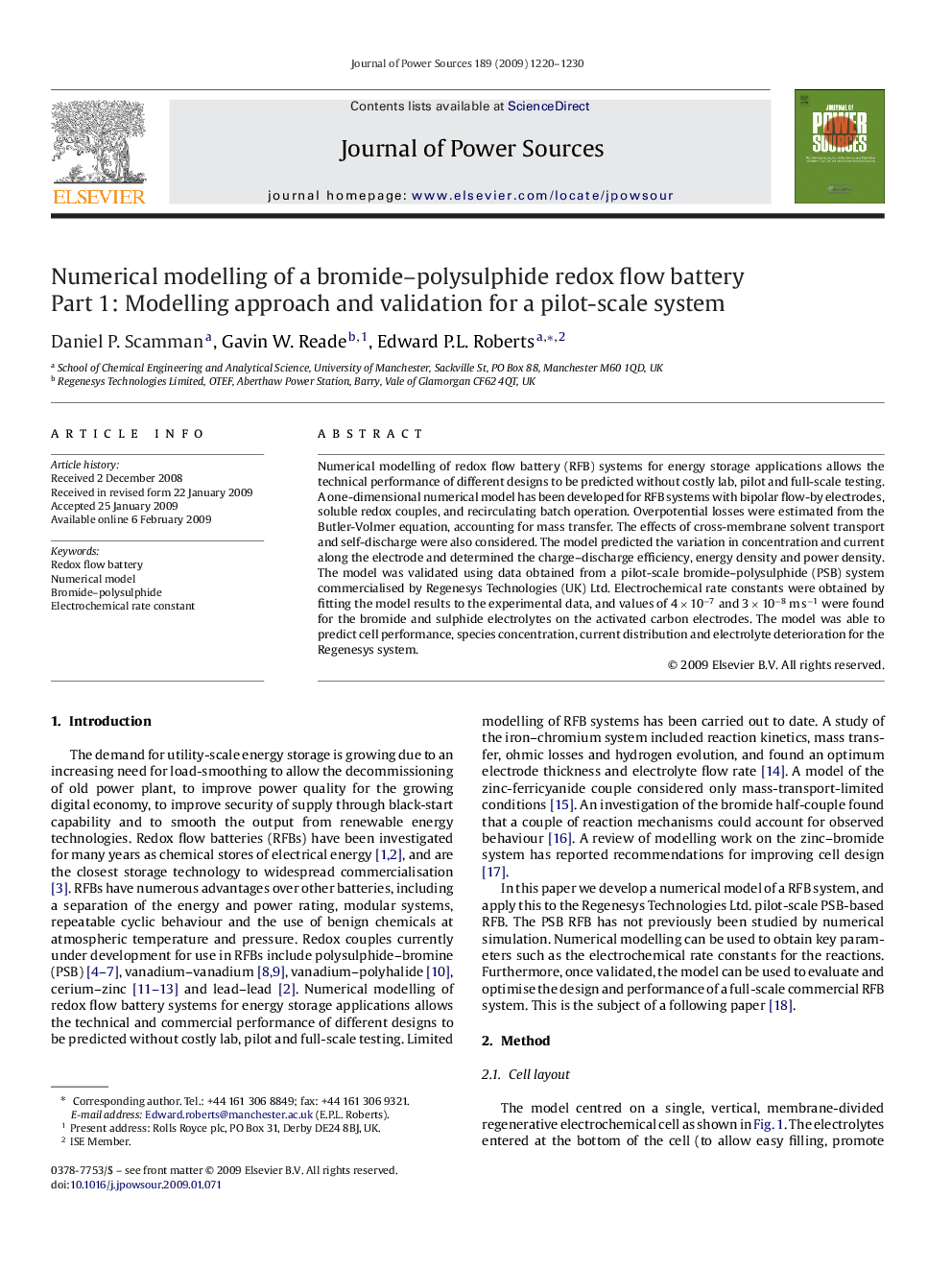| Article ID | Journal | Published Year | Pages | File Type |
|---|---|---|---|---|
| 1290006 | Journal of Power Sources | 2009 | 11 Pages |
Numerical modelling of redox flow battery (RFB) systems for energy storage applications allows the technical performance of different designs to be predicted without costly lab, pilot and full-scale testing. A one-dimensional numerical model has been developed for RFB systems with bipolar flow-by electrodes, soluble redox couples, and recirculating batch operation. Overpotential losses were estimated from the Butler-Volmer equation, accounting for mass transfer. The effects of cross-membrane solvent transport and self-discharge were also considered. The model predicted the variation in concentration and current along the electrode and determined the charge–discharge efficiency, energy density and power density. The model was validated using data obtained from a pilot-scale bromide–polysulphide (PSB) system commercialised by Regenesys Technologies (UK) Ltd. Electrochemical rate constants were obtained by fitting the model results to the experimental data, and values of 4 × 10−7 and 3 × 10−8 m s−1 were found for the bromide and sulphide electrolytes on the activated carbon electrodes. The model was able to predict cell performance, species concentration, current distribution and electrolyte deterioration for the Regenesys system.
